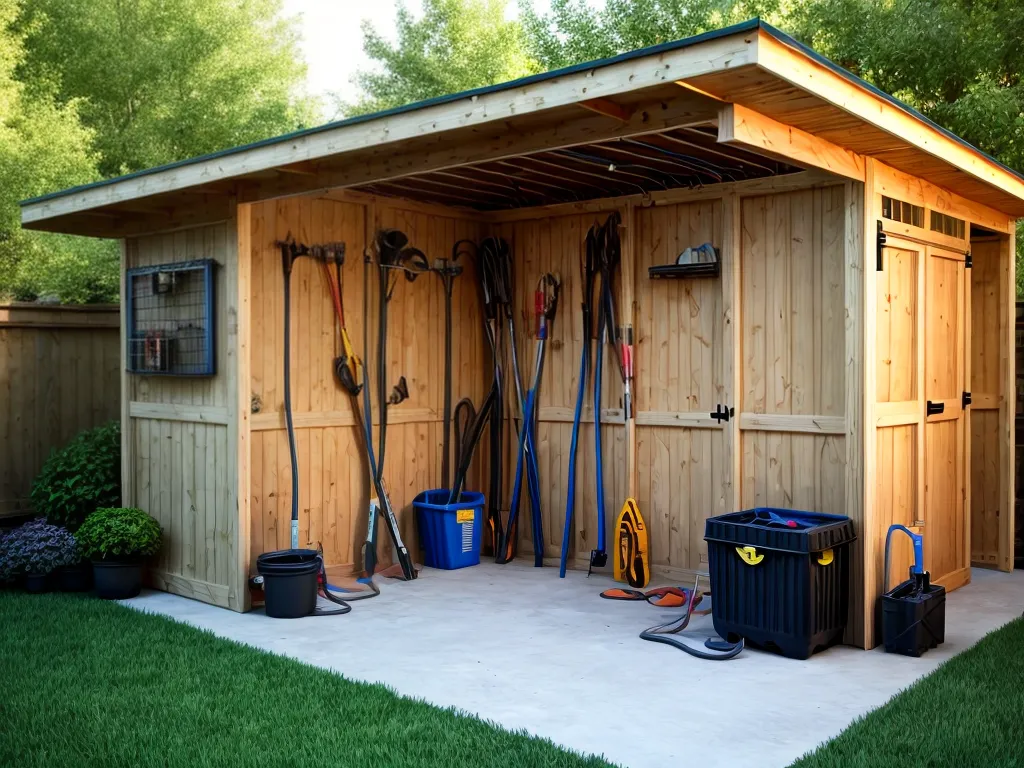
How to Wire Your Backyard Shed on a Tiny Budget
Wiring a backyard shed can seem like an intimidating task, especially when you're trying to do it affordably. However, with some planning and cost-effective materials, you can successfully wire your shed without breaking the bank. Here's how to wire a backyard shed on a tiny budget:
Assess Your Power Needs
Before purchasing any materials, you need to determine how much power you'll require in your shed. Consider what you plan to use the space for.
-
Will you have lighting? If so, how many light bulbs or fixtures? LED bulbs can provide plenty of light efficiently.
-
Any outlets? Estimate how many you'll need for tools, chargers, appliances, etc.
-
What about a small space heater in cold weather? These require more power.
-
Will there be a refrigerator or freezer out there? These have high starting wattages.
Consider your needs both now and in the future so you don't undersize your wiring.Safety tip: For a shed, a 20-amp circuit is usually sufficient.
Choose Appropriate Gauge Wire
The wire gauge (thickness) determines how much current the wiring can safely handle. For a 20-amp circuit, you'll want 12 AWG copper wire. This is thick enough to prevent overheating.
While 10 or even 14 gauge wire would work, 12 AWG offers the best value for this application. It's cheaper than going too big, but more durable than going too small.
Select a Cost-Effective Power Source
Running wires underground from your main electrical panel would be very expensive. Instead, consider these budget-friendly alternatives for powering your shed:
-
Outdoor outlet extension cord: Up to 50 ft. cords are available. Bury the cord 6-12 in. underground in PVC conduit.
-
Mount an exterior outlet on an outer wall of your house, positioned close to where the shed will be.
-
Small solar panel kits provide power off-grid. Charge a battery for use at night.
-
A generator is inexpensive but requires fuel and maintenance. Useful for occasional backup power.
Choose the option that best suits your needs and budget.
Use Surface-Mounted Electrical Boxes
Wiring your shed will require electrical boxes - outlet and switch boxes, junction boxes, etc. Surface-mounted or exterior-rated boxes are much cheaper than having to cut into studs and install recessed boxes.
For a basic shed, surface mounted boxes work just fine. Secure them tightly to surfaces with appropriate screws.
Run Wires in Conduit
For safety and aesthetics, you'll want to run the 12 AWG copper wires inside protective conduit. Schedule 40 PVC is inexpensive and easy to work with.
Consider running wires in:
-
Rigid PVC conduit for straight sections. Use couplers to join pieces.
-
Flexible PVC conduit for curved or angled sections.
-
Use conduit bodies to make sharp turns.
Conduit keeps everything protected and neat looking.
Add a GFCI Outlet
While regular outlets would work, I strongly recommend using a GFCI (ground fault circuit interrupter) outlet instead. This offers important protection against shocks and electrocution if a tool or wire becomes grounded.
GFCI outlets aren't much more expensive than regular ones, so they're worth installing in a shed for safety. Just follow manufacturer wiring instructions carefully.
Inspect Your Work
Before using your newly wired shed:
-
Check for exposed wires or loose connections and repair them.
-
Verify all boxes and conduit are securely mounted.
-
Test GFCI outlets to ensure proper function.
-
Turn power on and test lights, outlets, and devices.
Taking time to properly assess, plan, and safely wire your shed will allow you to get powered up on a budget! Let me know if you have any other questions.